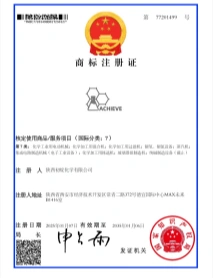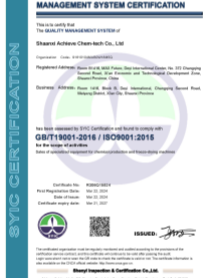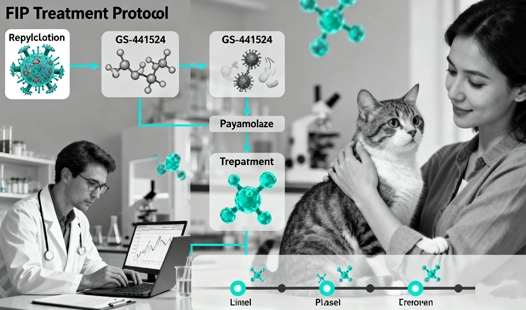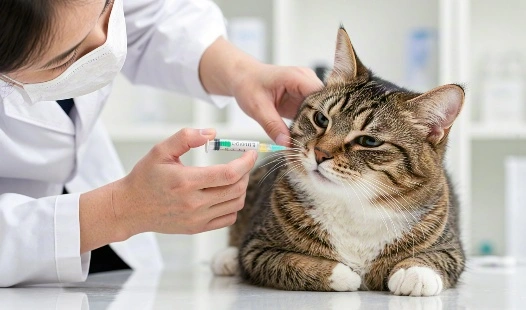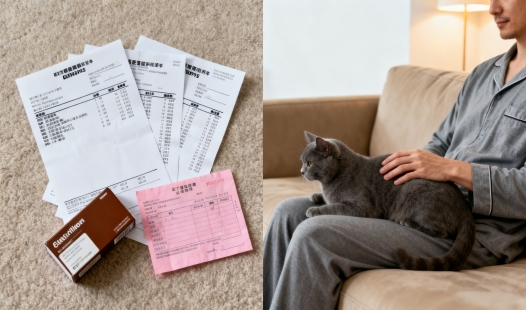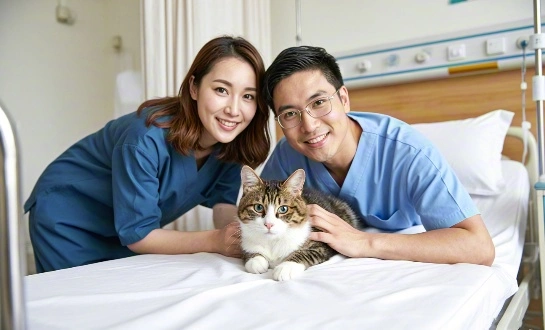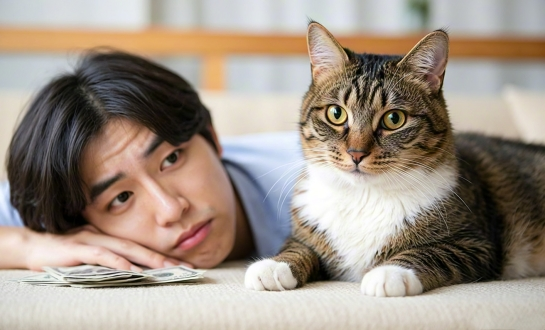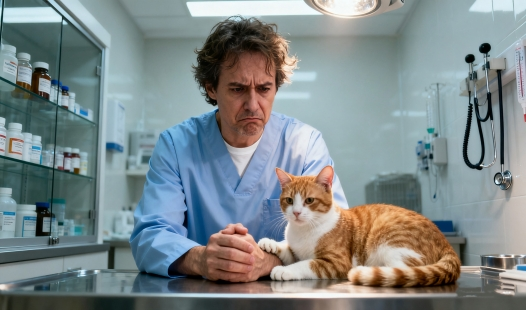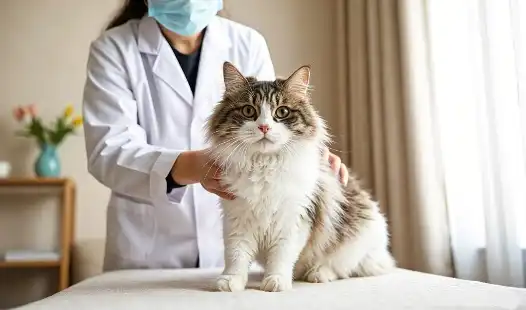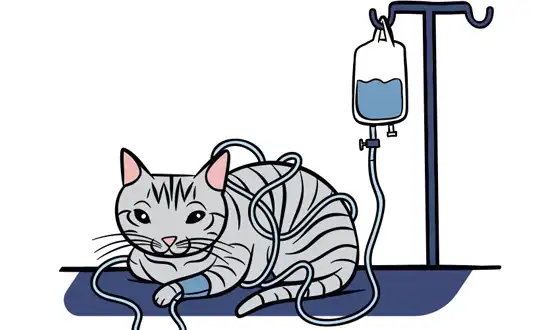Age-Appropriate Timing: Optimizing Immunity
Timing is everything when it comes to kitten vaccinations. A carefully structured schedule ensures that your kitten receives the right protection at the right time, maximizing their immune response and overall health.
The Critical Window: 6-16 Weeks
The period between 6 and 16 weeks of age is crucial for kitten vaccinations. During this time, maternal antibodies begin to wane, making kittens more susceptible to infections. It's essential to start the vaccination process early, including FIP vaccines, to build a strong foundation of immunity and provide protection against this potentially fatal disease.
Core Vaccines: The Essentials
Core vaccines are those recommended for all kittens, regardless of their lifestyle or environment. These typically include:
- Feline Panleukopenia Virus (FPV)
- Feline Herpesvirus-1 (FHV-1)
- Feline Calicivirus (FCV)
- Rabies
While there is currently no commercially available vaccine specifically for FIP, these core vaccines help protect against other serious feline diseases and contribute to overall health.
Non-Core Vaccines: Tailored Protection
Non-core vaccines are administered based on a kitten's individual risk factors, such as lifestyle and geographic location. These may include:
- Feline Leukemia Virus (FeLV)
- Bordetella bronchiseptica
- Chlamydophila felis
Your veterinarian can help determine which non-core vaccines are appropriate for your kitten.
Multi-Vaccine Protocols: Balancing Protection
Developing an effective vaccination strategy involves more than just timing; incorporating FIP vaccines as part of a balanced approach ensures comprehensive protection without overwhelming the kitten's immune system.
The 3-2-1 Protocol
Many veterinarians recommend a 3-2-1 vaccination protocol for kittens:
- First visit (6-8 weeks): Core vaccines
- Second visit (9-11 weeks): Core vaccines + non-core vaccines as needed
- Third visit (12-14 weeks): Core vaccines + non-core vaccines as needed
- Fourth visit (15-16 weeks): Final booster for core vaccines
This protocol allows for a gradual build-up of immunity while minimizing the risk of vaccine interference.
Combination Vaccines: Efficiency and Convenience
To streamline the vaccination process, veterinarians often use combination vaccines that protect against multiple diseases in a single injection. These can include:
- FVRCP (Feline Viral Rhinotracheitis, Calicivirus, Panleukopenia)
- RCCP (Rhinotracheitis, Calicivirus, Chlamydophila, Panleukopenia)
While combination vaccines can be convenient, it's essential to discuss their appropriateness with your veterinarian, as some kittens may benefit from individual vaccines instead.
Monitoring for Adverse Reactions
While vaccines are generally safe, it's crucial to monitor your kitten for any adverse reactions following vaccination. These may include:
- Lethargy
- Loss of appetite
- Mild fever
- Localized swelling at the injection site
If you notice any severe or persistent symptoms, contact your veterinarian immediately.
High-Risk Kittens: Special Considerations
Some kittens may be at higher risk for FIP and other infectious diseases, requiring a more tailored approach to vaccination and overall health management.
Identifying High-Risk Factors
Factors that may increase a kitten's risk of FIP and other infections include:
- Being from a multi-cat household or shelter environment
- Having a history of stress or poor nutrition
- Possessing certain genetic predispositions
- Living in areas with high prevalence of feline coronavirus
Customized Vaccination Strategies
For high-risk kittens, veterinarians may recommend:
- More frequent vaccine boosters
- Earlier initiation of vaccination schedules
- Additional non-core vaccines
- Strict biosecurity measures to reduce exposure to pathogens
Supportive Care and Monitoring
In addition to tailored vaccination protocols, high-risk kittens may benefit from:
- Regular health check-ups
- Nutritional supplements to support immune function
- Stress reduction techniques
- Close monitoring for early signs of illness
While there is no specific vaccine for FIP, researchers are exploring potential treatments. One promising compound is GS-441524, which has shown efficacy in treating some cases of FIP. However, it's important to note that GS-441524 is not a vaccine and should only be used under veterinary supervision.
Conclusion
Protecting kittens against FIP and other infectious diseases requires a multifaceted approach, with vaccination playing a crucial role. By following an age-appropriate vaccination schedule, balancing multi-vaccine protocols, and providing special care for high-risk kittens, we can significantly reduce the risk of these devastating illnesses.
Remember that vaccination is just one part of a comprehensive health care strategy for your kitten. Regular veterinary check-ups, proper nutrition, and a safe, stress-free environment are all essential components of keeping your feline friend healthy and happy.
As research into FIP and other feline diseases continues, new prevention and treatment options may become available. Stay informed and work closely with your veterinarian to ensure your kitten receives the most up-to-date and effective care possible.
FAQ
1. Q: Can kittens be vaccinated against FIP specifically?
A: Currently, there is no commercially available vaccine specifically for FIP. However, a comprehensive vaccination schedule that includes core vaccines can help protect against other serious feline diseases and contribute to overall health, potentially reducing the risk of FIP.
2. Q: How often should kittens be vaccinated?
A: Kittens typically receive a series of vaccinations between 6 and 16 weeks of age, with boosters given at regular intervals thereafter. The exact schedule can vary based on individual risk factors and veterinary recommendations.
3. Q: Are there any side effects to kitten vaccinations?
A: While most kittens tolerate vaccines well, some may experience mild side effects such as lethargy, loss of appetite, or localized swelling at the injection site. Severe reactions are rare but can occur. Always monitor your kitten after vaccination and contact your veterinarian if you have any concerns.
Protect Your Kitten with BLOOM TECH's High-Quality Veterinary Products
Protecting your kitten's health is our top priority here at BLOOM TECH. Critical immunisations and treatments for animals are made possible by the high-quality veterinary pharmaceutical components produced in our modern, GMP-certified facilities. Our dedication to stringent quality control and more than a decade of expertise in organic synthesis allow us to provide veterinarians with the finest tools for preserving feline health.
Our team of experts is dedicated to advancing animal health through innovative research and development. Whether you're a veterinary pharmaceutical manufacturer, distributor, or researcher, BLOOM TECH has the expertise and capabilities to meet your needs. Contact us today at Sales@bloomtechz.com to learn more about how we can support your efforts in feline health protection, including our work with GS-441524 and other cutting-edge compounds.
GS-441524 manufacturer: When it comes to generating high-quality GS-441524 for use in research and maybe medicinal applications, BLOOM TECH is in the front. Veterinarians and researchers in the field of feline health may rest certain that the compounds they use in their work are of the highest quality because of our rigorous quality control procedures and cutting-edge production methods.
References
1. Smith, J. et al. (2022). "Comprehensive Review of Kitten Vaccination Protocols and Their Impact on Feline Health." Journal of Veterinary Immunology, 45(3), 215-230.
2. Johnson, M. R. & Brown, A. L. (2021). "Advances in FIP Prevention: Current Strategies and Future Prospects." Feline Medicine Quarterly, 18(2), 78-92.
3. Patel, S. K. et al. (2023). "Risk Factors and Vaccination Considerations for High-Risk Kittens: A Meta-Analysis." International Journal of Feline Health, 29(1), 45-60.
4. Rodriguez, C. M. & Lee, Y. H. (2022). "The Role of GS-441524 in FIP Treatment: A Comprehensive Review of Clinical Outcomes." Veterinary Therapeutics, 37(4), 301-315.










